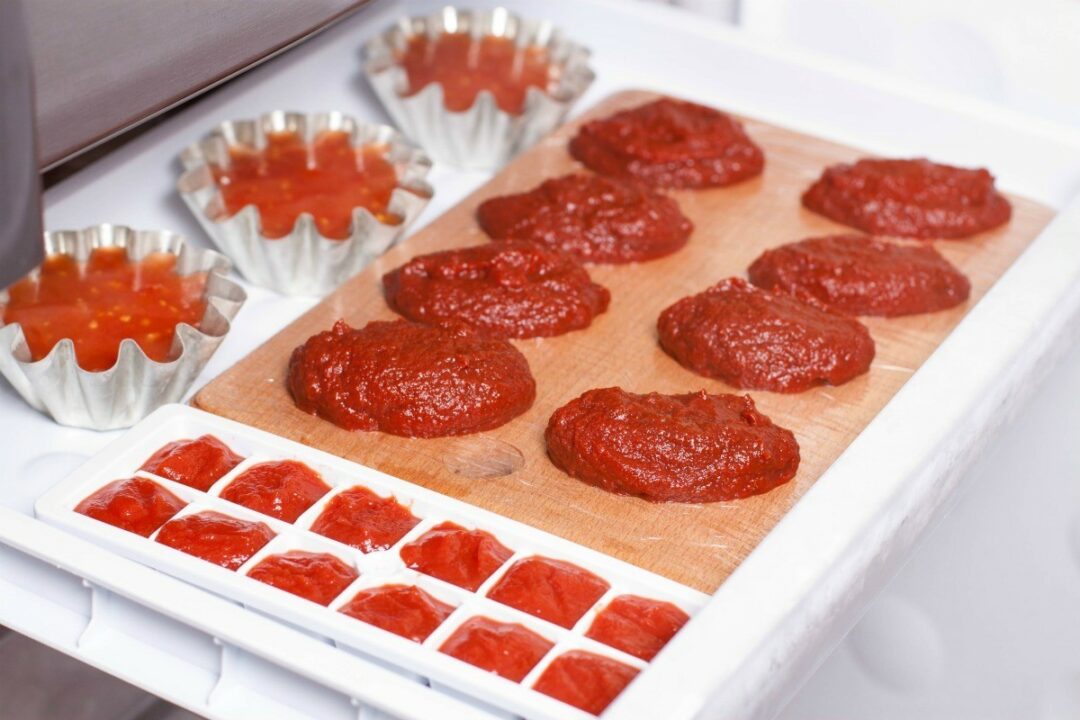If you’re busy putting together your big Friday night plans, I wanted to leave you with this quick how-to. If you’ve been following us for some time, you’ll know I freeze leftover tomato paste.
It comes in such a small can, but I rarely use all of it in one recipe. Therefore, rather than tossing it away, I keep it in the freezer so I won’t have to purchase another can.
Although it sounds easy enough, I have developed a better method for freezing and storing my leftover tomato paste after freezing it for so many years.
Previously, I would just place it in a freezer bag, squeeze it all down to the bottom, and put it in the freezer. Whenever I needed it again, that created problems.
How do I measure a frozen chunk of tomato paste? How much would I need if I only wanted to use some of it? I would end up breaking off a chunk and never really knowing how much I was consuming.
In this tutorial, Apronese going to show you what you should be doing with your left over tomato paste, and it’s as easy as 1-2-3. If you’ve been throwing away your partially used tomato paste or dumping it into a freezer bag like I used to, I’m going to show you what you should be doing.
Tomato Paste: How to Freeze It – Step by Step Photos
Step 1: Tomato Paste Preparation
Using a plastic wrap and a plate, place the leftover tomato paste on a plate or baking sheet and measure it into 1 tablespoon dot portions.
When you freeze the tomato paste, make sure that the plastic wrap is used to keep the paste from sticking to the plate and is used to wrap the paste within the freezer bag.
Do not allow the dollops to touch so that they freeze individually and are easily separated into servings of 1 tablespoon.
Place the plate or baking sheet into the freezer uncovered for 2-3 hours, or until the dollops have frozen solid to the point that they cannot be handled.
Step 2: Tomato Paste is Transferred

By freezing tomato paste uncovered on a flat surface, you will be able to separate it into individual lumps much more easily, however if you leave it in that condition for an extended period of time you will be likely to get freezer burn and dryness.
Once they have solidified, you need to transfer them to an airtight container so that you can store them for a long period of time. I used a quart size freezer bag and labeled it with the contents.
If you wrap the frozen solid balls in plastic wrap and place them inside the freezer bag, they won’t fuze together because they are already solid. Just lift up the plastic wrap from the plate and wrap it around the balls.
Step 3: For Long-term Storage, Freeze
Before sealing, squeeze out any air in the bag. Once the bag is sealed, you can just grab one or more lumps of tomato paste to use in your next recipe.
I find that tomato pastes last quite a while in the freezer because they have such a low moisture content in the first place.
As I tend to use tomato paste frequently, I’ve never kept it in the freezer for more than 4-5 months, but it has always maintained its quality.
In a flash, you can make tomato paste right in your freezer. Because the lumps are small, I often just drop them into the soup or sauce and stir. They melt and blend in in just a few seconds.
This tip is really simple for you, right? Do it in your free time and let Apronese know about your results.







